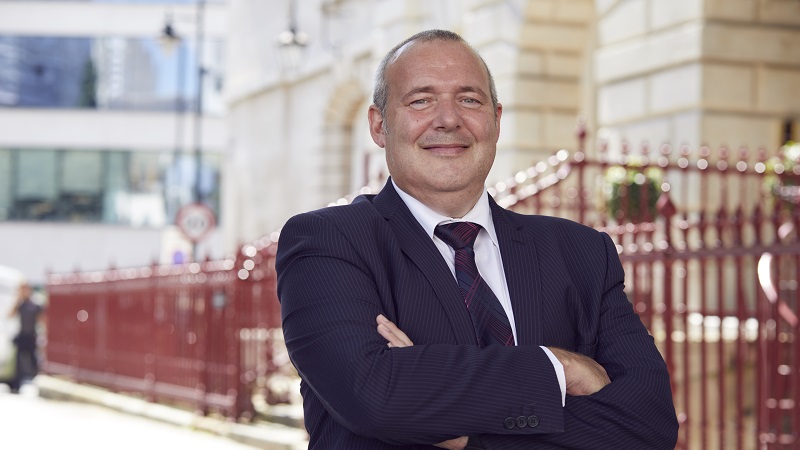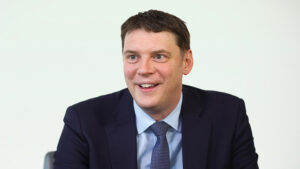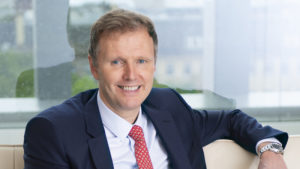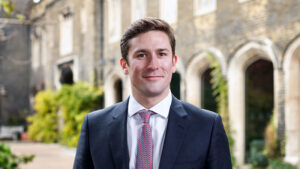When the opportunity to set up a new discretionary fund management (DFM) service at Chase de Vere cropped up early last year, it was enough to tempt Ben Willis away from the rival where he’d spent more than a decade fine-tuning his craft. Willis jumped ship from Whitechurch in April 2018 after 11 years spent building up the DFM offering alongside former managing director Gavin Haynes, who also quit the firm in January this year.
Willis was surprised when approached by Chase de Vere that an outfit with its heritage, established in 1969, did not already have a model portfolio service in place. It was the opportunity of starting from a blank sheet of paper that piqued his interest. “It was a chance to go in with everything I’d learnt at Whitechurch, which was a great place to learn discretionary management.”
Chase de Vere launched the portfolios on 1 June 2018, midway through one of the most challenging years for markets in history. Willis describes the past year as “a baptism of fire”, especially the fourth quarter when escalated volatility hit investors hard. Three months into the job, his biggest concern was not market turbulence but the fear that volatility would deter people from investing in such a new proposition. “Thankfully, it worked in our favour. Advisers were thinking, ‘If it’s going to be uncertain ahead then I can have somebody looking after the portfolios all the time, and clients could benefit from the service’.”
The ‘magic number’ for adviser fees
There are 12 model portfolios in total, all launched on 1 June 2018. These comprise three different risk ratings – adventurous, balanced and cautious – with four underlying strategies: Capital Growth; Higher Income; Income & Growth; and Ethical. Barring the ethical portfolio, ongoing charges figures (OCF) are capped at 48 basis points with an all-in fee of 1%, including management and platform costs.
This cap is necessary because advisers have become increasingly focused on costs, says Willis. “The magic number I learnt at Whitechurch was 2% or less,” he says. “If advisers charge 1% and we can build something that’s 1% all in, then they can then go to clients and say, ‘These are the costs and it’s palatable’.”
The OCF for the ethical portfolios is slightly higher, at 0.68%, to allow for the screening process and the fact there is no passive exposure. “Investors who want to see their views reflected in their portfolio will pay upfront because they realise it’s a bit more specialist.”
Ethical portfolio’s outperformance
Looking at Q2 performance of the balanced portfolios, the Capital Growth variant returned 2.8%, Higher Income returned 2.9% and Income & Growth returned 3%, all compared with 2.5% for the Arc £ Balanced Asset Private Client Index. The Ethical portfolio, however, eclipsed them all over the quarter with a 3.9% return against the same benchmark. The portfolio’s best-performing holding over the quarter was the BMO Responsible Global Equity fund, which delivered 10.2%.
It’s a similar story since the portfolios’ inception. From 30 June 2018 to 30 June 2019, the Ethical portfolio returned 4.2% versus the Arc benchmark’s 2.3%. This compares with 2.3% for the Higher Income, 2.2% for Income & Growth and 2.3% for Capital Growth.
Willis believes performance in all portfolios has held up well despite a contrarian position in the UK taken at inception, and the fact that the portfolios have not chased momentum areas such as US tech. Balanced Higher Income and Balanced Income & Growth have a 22% weighting to UK equities, while the Balanced Capital Growth portfolio has a 23% allocation.
“From the start we saw the investment case on a valuation basis,” he says. “You could say that hasn’t paid off because of the whole political mess that’s ongoing but it hasn’t been disastrous. Actually, performance has been really pleasing.”
Whitechurch 2.0
Chase de Vere’s DFM service is by Willis’s own admission something he has more or less copied and pasted from Whitechurch, but with necessary tweaks. Willis now runs the portfolios out of Bath rather than Bristol where Whitechurch is based. “In terms of how the service looks, how it’s constructed, the models, the objectives and risk profiles, that’s all down to me,” he says. “No surprise it’s like Whitechurch version 2.0. I just adapted the service I helped deliver there, in line with Gavin, for Chase de Vere and the target adviser audience.”
Much of the heavy lifting, including obtaining discretionary permissions, putting in place the administration team in Manchester and conducting beauty parades of platforms, had been done behind the scenes before he arrived. “I just came in and ticked a number of boxes, put the cherries on the top of the cake and took all the glory,” he adds with a smile.
The Chase de Vere portfolio management team is three-strong, made of up of Willis, who is head of portfolio management, Justine Fearns, research director, and Bradley Packham, a keen young economics graduate who joined the team in July last year as research analyst.
Willis describes Fearns as “brilliant” and “integral to the whole process” because she has been with Chase de Vere for more than 20 years and knows it inside out from a cultural perspective. Not only that but Willis and Fearns have known each other personally for about the same amount of time as both are a part of the south-west wealth management scene. “She is well-respected and brings a wealth of experience. It’s a no-brainer for me to say ‘I’ve been brought in to run the service but I need somebody to run it with me and you’re an ideal fit’.”
Willis says Packham, meanwhile, has shown a lot of potential since joining the team and has fitted in perfectly. “To be fair, he does a lot of the grunt work on the spreadsheet side but he’s created a lot of processes and procedures that we have in place.”
Three seems like quite a small number for a team running £450m but that’s where economies of scale come in, says Willis. “We could be running £100m or £100bn, but the actual workload doesn’t change because of the way [the portfolios] are structured. The only way it’s going to increase is if we go on to more than one platform.” The model portfolios are currently only on Fidelity’s Fundsnetwork platform but the firm is working towards adding them to others as soon as possible.
Captive adviser audience
Another boon for Willis is Chase de Vere’s “captive audience” of more than 200 IFAs with some 16,000 clients, according to the company website. The portfolios are therefore only marketed to Chase de Vere advisers but, says Willis, that is enough for now and there is no need to branch out to the wider adviser community. “You can never rule it out but there’s no pressing need to branch out at the moment. We had a great first 12 months but there’s plenty we can still attract in terms of assets. As the service grows, however, we’ll probably ask, why not?”
The only stumbling block is the fact that the external IFA marketplace is crowded and the portfolios only have a one-year track record and about £450m assets under management (AUM). “It’s going to need at least three years of performance and quite significant AUM,” says Willis. “Only then will people think, ‘Actually, they’re running quite a bit, their performance is good’ and then they’ll start considering you.”
Willis has made it his personal ambition to grow AUM to £1bn within three years of launch, which gives him less than two years. Does he see this as a realistic target? “I think we could do that considering where we are today,” he says. “You need to have some kind of target.” AUM in the ethical portfolios makes up about 20% of the total, and demand is growing.
Future of the ethical range
Willis predicts this trajectory will continue on the back of Chase de Vere’s history of working with healthcare services such as the British Medical Association, to which it has provided advisory services since 2005, and its link-up in July to offer advice to members of the Royal College of Surgeons. The ethical portfolios are screened by an independent firm called Ethical Screening to avoid non-medical animal testing, pornography, tobacco, gambling and arms production. This whittles the fund universe down to about 80 funds, which the team then scrutinises.
The ethical portfolios do not contain absolute return as funds that make money from shorting are weeded out. Neither do the portfolios have direct exposure to emerging markets and Asia Pacific as companies in these jurisdictions tend to fall short of ESG criteria. “Millennials are still on the journey of asset gathering and there will be maybe 10 to 15 years of that generation coming through. I don’t think ESG is going away.”
A year down the line performance is satisfactory and assets are coming into both the standard and ethical portfolios. With the benefit of hindsight there is one thing Willis would do differently in the first few months if starting over from scratch.
He explains: “We were getting regular access to cheaper share classes of funds that we already held and introducing them to the portfolios when they became available on the platform. However, due to platform trading functionality, if you introduce a new fund position you have to rebalance the whole portfolio.
“We learnt that such frequent trading was costing us in performance in the short term due to market movements when rebalancing. It’s only basis points at a time but when you add it up, you could be looking at half a per cent or more.”







